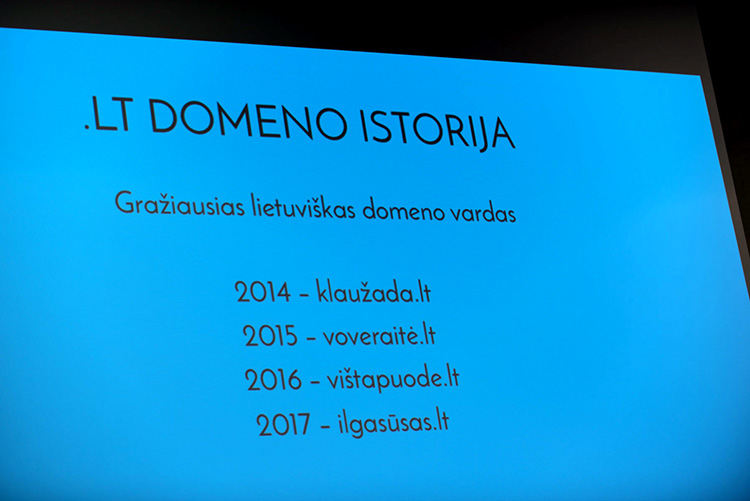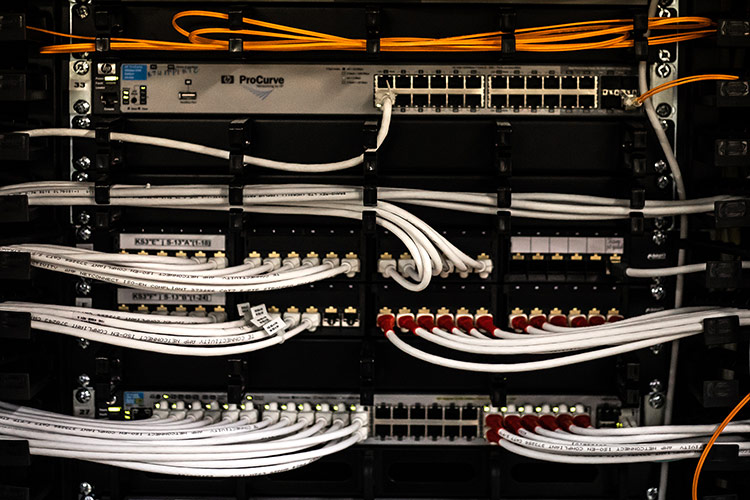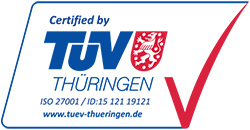Check .lt domain
.lt domain turns 25
LT area domain was created on 3 June 1992 with the help of the Norwegian Government at the proposal of the University of Oslo. The first internet names mii.lt, ktu.lt, vu.lt were registered in 1993.
It was the beginning of the significant history of the Lithuanian domain 25 years ago. Now, this history continues with the Internet Service Centre (DOMREG) at the Information Technology Services of Kaunas University of Technology (KTU ITD).
The internet was needed after the 13 January events
The Head of the Internet Service Centre at KTU ITD Daiva Tamulionienė remembers how necessary were electronic channel for spreading of the message of Lithuania, when the Soviet authorities tried to control the media after the 13 January events.

Daiva Tamulionienė, Head of KTU Internet Service Centre DOMREG
“The Norwegian Government offered to help Lithuania and brought three huge machines-computers, installed x400 protocol and launched an email which was completely different from the one we are used to see now. There was no TCP/IP network in Lithuania back then, therefore the machines were inter-connected by x25 protocol and connected to the University of Oslo in Norway via the artificial satellite. It provided a possibility for the academic community and the Government of the country that had announced its independence to use the internet and send the information on the events happening in Lithuania”, – tells D. Tamulionienė.
The first internet name with the Lithuanian ending LT was registered by the Institute of Mathematics and Informatics in 1993; the domains of Kaunas University of Technology and Vilnius University were created later. Back then, only the academic community, state institutions and companies could have the internet addresses.
The number of the Lithuanian domains is coming closer to 200 thousands
According to D. Tamulionienė, the first Lithuanian internet had been very slow and unreliable due to the poorly developed networks and slow satellite connection, therefore, a more reliable and stable TCP/IP network was installed at the Lithuanian Research and Education Network LITNET .
“I initiated the transfer of the support of the Lithuanian domain to Kaunas, because I was working with the Norwegian machines at the time and they were difficult to use. All information was Norwegian, the machines would stop working, and even sending of an email was difficult. Other countries already had TCP/IP network and were using the technologies that were modern at the time. We transferred the support of the Lithuanian domain to Kaunas, LITNET network, in 1995. Afterwards, we were actively improving the domain support services, particularly focusing on security”, – states D. Tamulionienė.
Currently, there are almost 190 thousands Lithuanian domains registered.
Creation of websites prompted the registration of domains
Expert of Information technologies Marius Pareščius was one of the active pioneers of the registration of the Lithuanian internet names. According to him, the strongest prompt for the Lithuanian domains was provided by the creation of email and websites that began in 1995.
He says that it took a lot of work to persuade the companies to create websites with the ending .lt, because an international company was simultaneously offering .com domains and Lithuanian registry was quite strict.
“We were persuading the business that it was better to pay some money and have a unique Lithuanian address allowing identification of the country instead of copying the others. We have our own identity and Lithuanian domains should use the ending .lt. Now there are no such issues and virtually all Lithuanian websites choose the Lithuanian domain”, – remembers M. Pareščius.
Lithuanian letters in the internet addresses are not popular
To make Lithuanian internet names really Lithuanian, there was a need to register domains with Lithuanian diacritics. A technical possibility occurred in 2004 with installation of IDN system displaying the Lithuanian letters in the internet names.

Tomas Mackus, Head of the Client Service Office at KTU Internet Service Centre DOMREG
The Head of the Client Service Office at the Internet Service Centre of KTU ITD Tomas Mackus states that Lithuanian symbols are not popular in the internet names and a total number of the registered domains with such letters are approximately 1 600.
The addresses with Lithuanian characters are not very popular, because they are focused on the local internet community. It would be unusual to give such an address to the foreign partners – they would find it difficult to enter the address using the letters like š, ž, and others", – states T. Mackus.
According to him, the biggest part of our written language consists of the Latin alphabet and there are a few diacritics, therefore, until there was a technical possibility to use specific Lithuanian letters, people got used to writing the “incorrectly spelled” names. The possibility to use a correct language both in text and in the internet names occurred only after the approval of the new internet standards and installation of the updates in the internet address system.
“Starting from 2014, we elect the most beautiful Lithuanian internet name of the year in cooperation with the Society and the State Commission of the Lithuanian Language and the Lithuanian Computer Society. The names klaužada.lt, voveraitė.lt, vištapuode.lt, ilgasūsas.lt have already received this award”, – tells T. Mackus.
According to him, the internet names with diacritics are popular in the Russian Federation and the People’s Republic of China, because Russian Cyrillic and Chinese written language are completely different from the Latin alphabet. Moreover, these countries are very big and have many users; therefore their domains in the national language are very popular.

The internet name containing the word “Lithuania” (“Lietuva”) will need a permit
There are internet users who would like to register the addresses containing the Lithuanian swear words and other profanities. The register of the Lithuanian internet names DOMREG is constantly compiling the list of undesirable internet names. It is not possible to register the faulty or offensive words, as well as the internet name containing the word “Lithuania” (“Lietuva”). They are restricted by the laws of the Republic of Lithuania. Some domains are blocked under the authority of the courts, law enforcement or other state institutions.
The Head of the Internet Service Centre at KTU ITD D. Tamulionienė thinks that various restrictions on the registration of the internet names have been reduced, therefore administration of the internet names is a little stricter to avoid the false identities or the crimes committed online.
“We are quite liberal. The persons can use the name of Lithuania in the domain name with the ending .lt only with a permit of the Communications Regulatory Authority (RRT). If a name of the company or registered trademark contains the word Lithuania (Lietuva), registration of such domain does not require the permit of RRT. The use of the name of Lithuania has to be transparent, because it is the name of the country”, – states D. Tamulionienė.
More than 10 thousands cybercrimes in a year
Increasing number of cybercrimes makes the specialists, who provide website hosting services, internet connection, administer servers, and support the internet addresses, concerned about security.

Rytis Rainys, Director of the Networks Regulation Department at the Communications Regulatory Authority
Director of the Networks Regulation Department at the Communications Regulatory Authority Rytis Rainys says that the number of the registered incidents online is increasing with each year, and widely known online crimes and purposeful hacker attacks impact the increasing amount of both, individual internet users and business operators.
According to him, after such events, as the widely discussed case of the theft of personal data from the clinic “Grožio klinika” it became obvious that security has to be carefully protected even in the sectors where cyber security was not considered a priority previously.
“We count more than ten thousands cases of the taken over information systems in Lithuania per year. Inserting a virus in the website is invisible to the user. If such a website is visited by thousands of users per day, it can infect thousands of computers, which is very dangerous. The main task of our institution is to stop the harmful actions of the hackers.”
Cyber criminals are looking for vulnerable users
The Computer Emergency Response Team (CERT-LT) was established in 2006. This department works with foreign partners and Lithuanian registrars.
“When fighting with the hackers, we have noticed that part of the attacks are initiated in the same IP addresses or domains, therefore, we begin by cleaning the viruses from the servers supporting the users' computers and websites”, – states R. Rainys.
He suggests the users should protect their computers and servers better by installing the updates of their software.
“The robots created by the cyber criminals are looking for the most vulnerable spots, i.e., the weakest users with the lowest level of protection. If we do not install the updates, antivirus systems, our behaviour online is irresponsible (we click on ambiguous links, open suspicious emails), we will be classified as weaker users with lower level of protection that are the target for the hackers' robots. If a user does not invest in the cyber security, fails to update his systems, he can become the victim tomorrow, if not today”, – warns R. Rainys.
He emphasises that we need to invest in security if we do not want to become the target of the hackers. The risk is even higher for the companies which activities are attractive to cyberattacks, for example, companies working in e-commerce, medical institutions and other organisations that collect the data of users; therefore, the level of protection has to be even higher.
Is it possible to “crack” the internet?
When asked about the possibility to “crack” the internet to make it unavailable for many users, R. Rainys says that it is possible in theory, but very difficult in practice.
“It is a good that our domain system is highly distributed and difficult to break. There were cases in 2005-2007, when hacker teams tried to “crack” the global DNS system with targeted DDoS attacks. There are thirteen groups of root servers supporting LT and other top level domains in the world. Hackers succeeded to crack 3 out of 13 in 2005 and only one in 2007. It takes at least one server to remain working for the others to synchronise and the system is functioning. Therefore, Lithuanian domain is secure and in good hands”, – states R. Rainys.

According to D. Tamulionienė, the Head of the Internet Service Centre at KTU ITD, that guarantees the security of the Lithuanian internet name and reliability of the service, very big investments are made in the security of DNS servers.
The infrastructure created for the current .lt domain is quite large and complex. It contains more than one or two servers. DNS servers are located in many countries of the world and they provide distributed services to .lt domain. If one or two servers stop working, the remaining ones take over their work. The infrastructure is constantly enhanced and expanded; we do everything to make sure that hackers could not damage the support system of the Lithuanian domain", – assures D. Tamulionienė.
Emigration will not reduce the number of domains
The Head of the Client Service Office at the Internet Service Centre of KTU ITD T. Mackus thinks that substantial emigration will not reduce the wish of the Lithuanians to use Lithuanian internet addresses.
“I hope that our young generation will be more educated, technologies will not be such a novelty as they were a decade ago, and young people will appreciate the value of the unique Lithuanian internet address for a personal website or email instead of just using their Facebook account. The internet has no boarders; therefore, there is not difference if a person lives in Lithuania or abroad. If he feels connection with Lithuania, he will always choose the domain name with the ending .lt”, – thinks T. Mackus.
Published 2017-06-21



